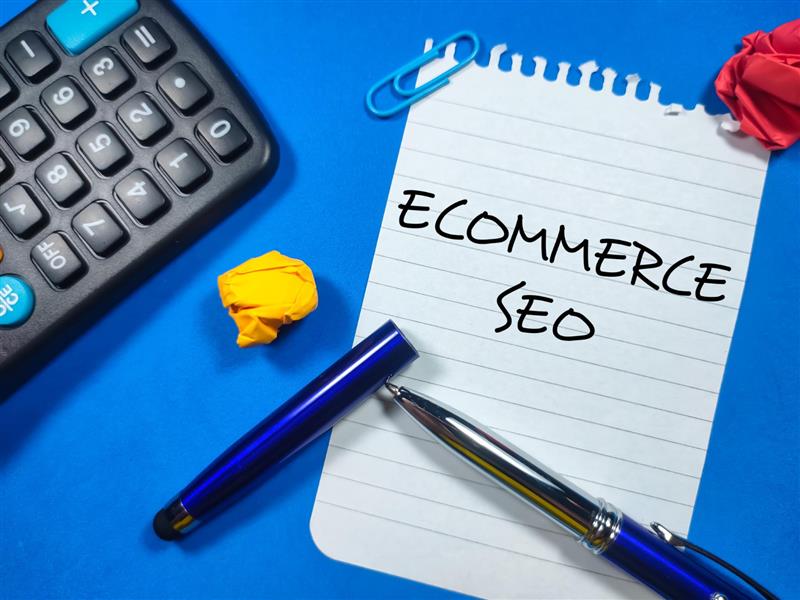The e-commerce space is changing quickly, and visibility on search engines will be among the many characteristics of success in 2026. As more brands sell products online, all businesses will need to deploy more advanced e-commerce SEO strategies to stay competitive. Shoppers are using search to assess pricing, find new products, and make purchasing decisions. As a result, e-commerce SEO optimisation is no longer an option; it is an essential strategy to generate sales.
In this blog, we explore the future of e-commerce SEO, outline advanced tactics driving change in 2026, and delve into e-commerce SEO best practices to win customers and scale revenue.
Why E-commerce SEO Matters More Than Ever
The digital shopper experience has become more personal, digital, instantaneous, and competitive. Customers expect immediate responses to inquiries, personalised product recommendations, and frictionless experiences as they purchase.
Paid ads are more expensive than ever, but e-commerce SEO offers an effective method to build more sustainable visibility over time. A credible e-commerce SEO strategy will ensure that your products show up where your buyers are searching to drive organic traffic and conversion.
By 2026, voice assistants, AI-enabled product discovery capabilities, and more immersive shopping experiences will have disrupted the search landscape. Only businesses that combine e-commerce SEO services with data-driven commerce strategies will be positioned to successfully appeal to all aspects of their customers’ needs.
Core Principles of E-commerce SEO in 2026
Optimising for User Intent
Search engines today place more emphasis on context rather than keywords. Rather than simply ranking a page based on specific phrases, algorithms will analyse user intent. A good e-commerce SEO optimisation in 2026 must be able to answer what the customer is actually searching for.
Structured and Rich Data
Simply put, search results are not just blue links anymore. Rich snippets, product ratings, FAQs, and schema markup play a huge part in visibility. In fact, optimising your store with structured data has become one of the e-commerce SEO best practices to get clicks.
Mobile First Indexing
Online shopping is predominantly done on mobile devices, which is why Google and other search engines use mobile-first indexing. This means that if your website is not mobile-friendly, you will suffer in rankings and short and long-term sales.
Advanced e-commerce SEO strategies in 2026
AI-Driven Keyword Research
Keyword research, as we know it, has been replaced by AI-driven analysis. AI-powered tools can now predict not only search terms, but the trends in consumer behaviour that will occur in the future. This will allow you to create content and a product page for the upcoming demand, much more proactively in your e-commerce SEO strategy than reactively.
Voice Search Optimisation
More and more people are using voice search; it has become a conventional tool for shopping. Users often ask voice assistants such as Siri, Google Assistant, Alexa, and more for product suggestions, making optimising for question-based searches, natural language searches, and conversational phrases an integral part of SEO e-commerce.
Visual and Image SEO
Consumers increasingly look for items using pictures rather than words. Sites such as Google Lens enable customers to snap a picture and discover related products. Optimising product images using alt text, captions, and quick-loading formats is one of the current e-commerce SEO best practices.
Personalised Content at Scale
Personalisation of dynamic content now carries over to SEO. Search engines favour pages with the ability to provide custom product recommendations, reviews, and suggestions to unique users. AI- and machine-learning-backed personalisation guarantees greater engagement and more robust rankings.
Technical SEO with Automation
Technical SEO is wiser. AI-powered automated crawlers identify indexing problems, duplication of content, and dead links in real-time. With automation included in your e-commerce SEO services, companies can have an error-free website experience and retain rankings without any delay.
Localised e-commerce SEO
Local optimisation is also essential even for international brands. Customers anticipate region-based offers, local languages, and geotargeted results. A full e-commerce SEO optimisation strategy today involves localised content and listings to appeal to buyers in their own localities.
E-commerce SEO best practices in 2026
Seamless Site Speed and Core Web Vitals
Search engines provide a lot of value in the way of ranking sites that load quickly and provide a seamless experience. Core web vitals are still one of the primary ranking metrics and should be an important part of any e-commerce SEO effort.
High-Quality Content That Converts
Product descriptions, category pages, and blogs must educate, engage, and convince. Simply throwing keywords in your content is outdated. Fast forward to 2026, where content marketing and SEO e-commerce will become synonymous, providing value and ranking simultaneously.
Building Trust Through Reviews and UGC
Shoppers heavily rely on reviews, ratings, and user-generated content. Building trust is important, but these signals are valuable in search as well. Incorporating authentic UGC might be one of the most reliable e-commerce SEO best practices today.
Secured and Fast Checkouts
SEO and conversion go hand in hand. A secure transaction process with reduced friction establishes trust with both customers and search engines. Sites that provide frictionless purchasing journeys see better rankings and increased sales.
Final thoughts
In conclusion, in 2026, e-commerce will be more customer-focused, data-driven, and competitive than ever. Adopting cutting-edge e-commerce SEO tactics that integrate voice and visual search, personalisation, AI-driven insights, and faultless technical execution is essential for success. Investing in e-commerce SEO services guarantees that your brand stays visible, reputable, and profitable.
You can boost your traffic and convert visitors into devoted customers by putting these e-commerce SEO best practices to use. Giving customers exactly what they want to buy will increase sales, regardless of how search engine optimisation changes.



